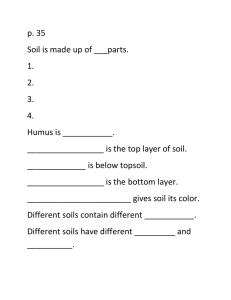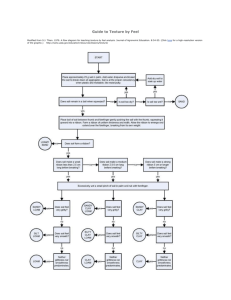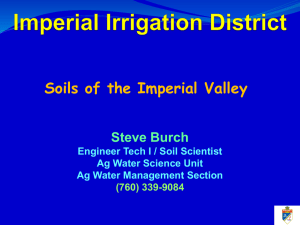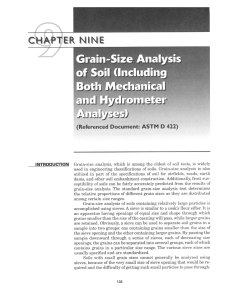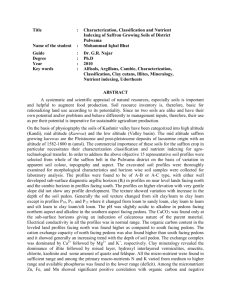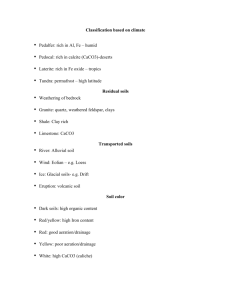How Are Soils Different Article
advertisement
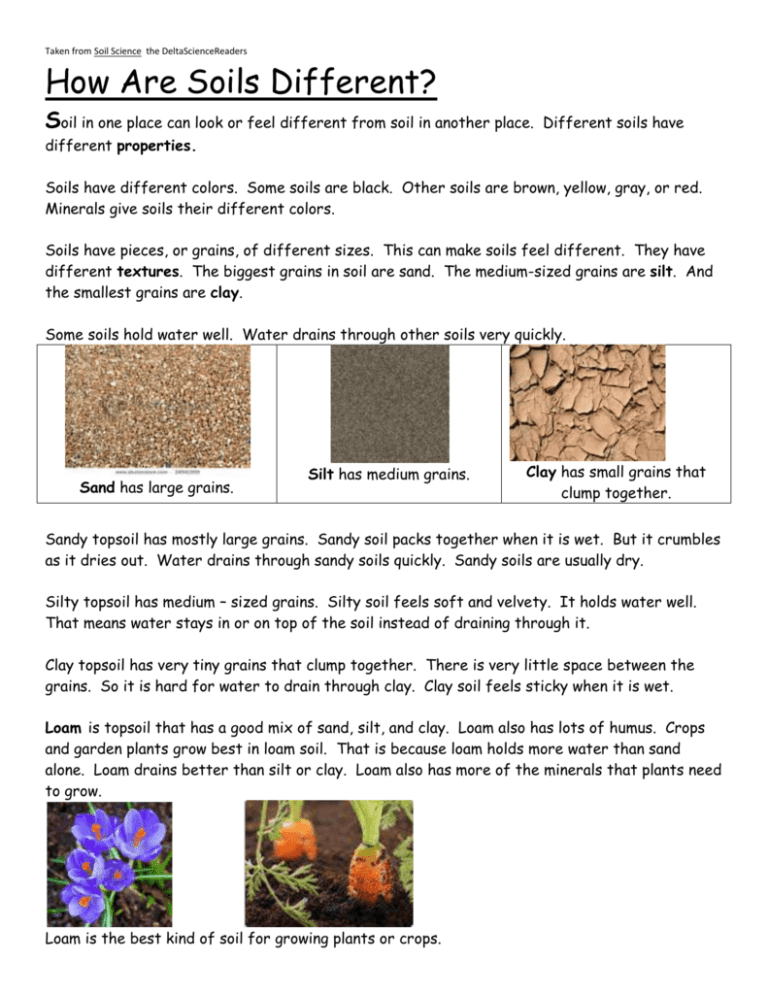
Taken from Soil Science the DeltaScienceReaders How Are Soils Different? Soil in one place can look or feel different from soil in another place. Different soils have different properties. Soils have different colors. Some soils are black. Other soils are brown, yellow, gray, or red. Minerals give soils their different colors. Soils have pieces, or grains, of different sizes. This can make soils feel different. They have different textures. The biggest grains in soil are sand. The medium-sized grains are silt. And the smallest grains are clay. Some soils hold water well. Water drains through other soils very quickly. Sand has large grains. Silt has medium grains. Clay has small grains that clump together. Sandy topsoil has mostly large grains. Sandy soil packs together when it is wet. But it crumbles as it dries out. Water drains through sandy soils quickly. Sandy soils are usually dry. Silty topsoil has medium – sized grains. Silty soil feels soft and velvety. It holds water well. That means water stays in or on top of the soil instead of draining through it. Clay topsoil has very tiny grains that clump together. There is very little space between the grains. So it is hard for water to drain through clay. Clay soil feels sticky when it is wet. Loam is topsoil that has a good mix of sand, silt, and clay. Loam also has lots of humus. Crops and garden plants grow best in loam soil. That is because loam holds more water than sand alone. Loam drains better than silt or clay. Loam also has more of the minerals that plants need to grow. Loam is the best kind of soil for growing plants or crops. Taken from Soil Science the DeltaScienceReaders

